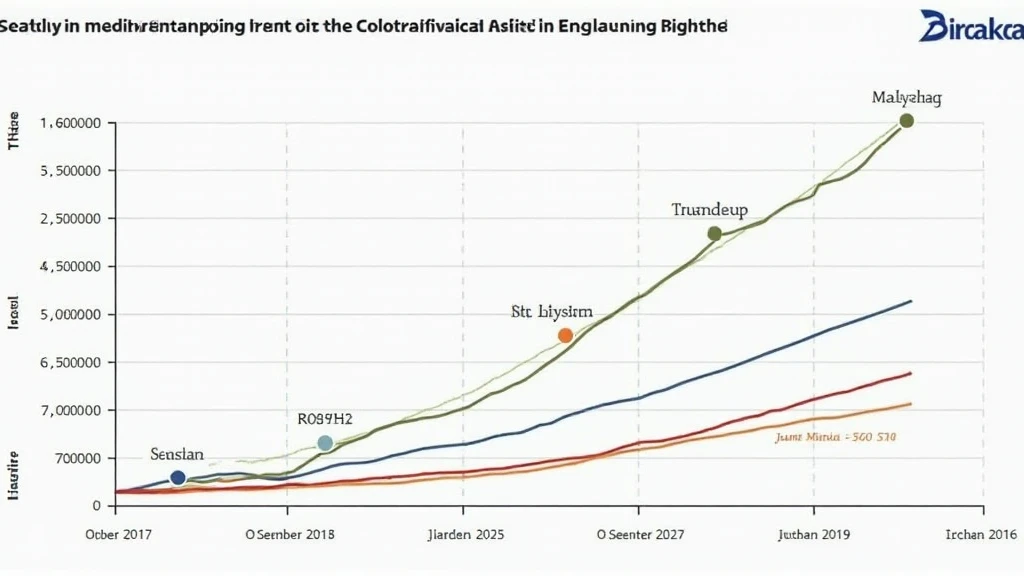The Future of Stablecoin Collateralization in Vietnam
With over $4.1 billion lost to DeFi hacks in 2024, the need for secure, reliable assets in the cryptocurrency world has never been more pressing. Stablecoins, particularly in Vietnam, are gaining traction as a potential solution to these challenges. In this article, we will explore stablecoin collateralization in Vietnam, its implications for the local economy, and its potential trajectory moving forward.
Understanding Stablecoins
Stablecoins are a type of cryptocurrency designed to maintain a stable value relative to a fiat currency or other assets. By providing a bridge between volatile cryptocurrencies and stable fiat currencies, they help facilitate trading and reduce risk. Often referred to as “digital dollar equivalents” because of their backing by traditional currencies, stablecoins have emerged as critical components of the broader cryptocurrency ecosystem.
The Mechanism Behind Collateralization
Collateralization essentially refers to the backing of a stablecoin with a reserve of assets, ensuring that each stablecoin is redeemable for a specified amount of the underlying asset. For example, a stablecoin pegged to the US dollar might require $1 in reserves for each token in circulation.

- Fiat-collateralized stablecoins: These are backed directly by fiat currencies (e.g., USDT, USDC), providing a simple and transparent structure.
- Crypto-collateralized stablecoins: These require backing by other cryptocurrencies (e.g., DAI). This introduces additional volatility but often includes mechanisms to maintain stability.
- Algorithmic stablecoins: Rely on algorithms and smart contracts to control supply and demand dynamics, without traditional collateralization.
The Appeal of Stablecoins in Vietnam
As Vietnam’s digital economy flourishes, the demand for stablecoins is rapidly rising. Various factors contribute to this trend:
- Increased cryptocurrency adoption: According to the latest statistics, Vietnam has seen a user growth rate of over 45% year-on-year in cryptocurrency participation.
- Remittances: Stablecoins can serve as a cost-effective means for settling remittances, with the potential to significantly lower transaction fees compared to traditional banking systems.
- Inflation hedge: Rising inflation concerns have pushed individuals toward stablecoins as a safeguard against depreciation of local currency.
The Regulatory Landscape in Vietnam
The regulatory framework surrounding stablecoins in Vietnam is evolving. With the government’s increased focus on blockchain technologies (or tiêu chuẩn an ninh blockchain), stakeholders are eager for clarity on how regulatory measures will shape the market. Current regulations primarily focus on digital assets, with pending guidelines specifically addressing stablecoins and their collateralization processes. Let’s breakdown some key points regarding regulation:
- National Bank’s stance: The State Bank of Vietnam has voiced concerns over the risks associated with stablecoins and has indicated planned regulations to enhance consumer protection.
- Investor education: With new products emerging frequently, educating investors about stablecoins is crucial to mitigate risks and encourage responsible usage.
- Future policies: The government aims to create a balanced regulatory environment that fosters innovation while protecting local investors.
Opportunities and Challenges Ahead
While stablecoins present promising opportunities for the Vietnamese market, they are not without challenges. Here’s a closer look:
- Opportunity for financial inclusion: Stablecoins can help unbanked Vietnamese citizens access financial services by providing them with a means of holding and transferring assets digitally.
- Scalability: To maintain growth, the infrastructure supporting stablecoin transactions must be robust enough to handle increasing user volumes and transactions.
- Market competition: A growing number of stablecoins are entering the Vietnam market, creating a competitive landscape that could drive innovation and improvements but may also confuse consumers.
Future Trends in Stablecoin Collateralization
As the landscape continues to evolve, here are some trends expected to impact the future of stablecoin collateralization in Vietnam:
- Rise of decentralized solutions: As DeFi continues to expand, the demand for decentralized stablecoins could lead to increased adoption in Vietnam.
- More institutional interest: Institutional investors looking to enter the crypto market may turn to stablecoins as a less volatile entry point, impacting their collateralization standards.
- Technological advancements: Innovations in blockchain technology will likely yield more efficient collateralization methods, enhancing transparency and security.
Conclusion: The Path Forward for Stablecoin Collateralization in Vietnam
As we’ve explored, stablecoin collateralization holds significant promise for Vietnam’s burgeoning digital economy. The combination of regulatory support, technological advancements, and increasing consumer interest positions stablecoins as critical players in the financial landscape. As with any investment, due diligence is key. Consult local regulators and ensure compliance with emerging guidelines.
To stay updated, keep an eye on trends in stablecoin development and engage with platforms that are actively shaping this space. Remember, the future of finance may very well be tied to the evolution of stablecoin collateralization in Vietnam.
For more insights and comprehensive articles on cryptocurrency and stability in finance, visit officialcryptonews.
Author: Dr. Minh Nguyen, a financial technology expert with over 12 published papers on blockchain applications in Asia and previously led the auditing of several prominent DeFi projects.




